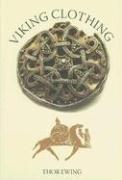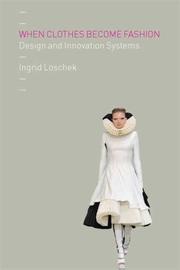| Listing 1 - 10 of 20 | << page >> |
Sort by
|
Book
ISBN: 9781845204730 1845204735 9781845204723 1845204727 0857851489 1283079755 1847887473 9786613079756 Year: 2009 Publisher: Bloomsbury Publishing
Abstract | Keywords | Export | Availability | Bookmark
 Loading...
Loading...Choose an application
- Reference Manager
- EndNote
- RefWorks (Direct export to RefWorks)
Book
Year: 2009 Publisher: Washington, DC : U.S. International Trade Commission,
Abstract | Keywords | Export | Availability | Bookmark
 Loading...
Loading...Choose an application
- Reference Manager
- EndNote
- RefWorks (Direct export to RefWorks)
Book
ISBN: 9780857854148 Year: 2009 Publisher: Oxford ; New York : Berg,
Abstract | Keywords | Export | Availability | Bookmark
 Loading...
Loading...Choose an application
- Reference Manager
- EndNote
- RefWorks (Direct export to RefWorks)
Book
ISBN: 9786612199646 1282199641 0191568767 Year: 2009 Publisher: New York : Oxford University Press,
Abstract | Keywords | Export | Availability | Bookmark
 Loading...
Loading...Choose an application
- Reference Manager
- EndNote
- RefWorks (Direct export to RefWorks)
Firms in the clothing industry engage in global sourcing and operate in global markets. Their global production networks have often been subject to scrutiny as the power relationships between buyer firms in developed countries and supplier firms in developing countries raise issues concerned with 'fast fashion', the role of brands, labour standards in developing countries, job losses among the most vulnerable workers in Europe and the US, and the growing differentiation within thebloc of developing countries between the least developed and fast developers, such as China and India.This book ana
Book
ISBN: 9781563675928 Year: 2009 Publisher: New York : Fairchild Books,
Abstract | Keywords | Export | Availability | Bookmark
 Loading...
Loading...Choose an application
- Reference Manager
- EndNote
- RefWorks (Direct export to RefWorks)
Clothing trade --- Clothing trade --- Social responsibility of business --- Moral and ethical aspects --- Social aspects
Book
ISBN: 1563674815 9781563674815 Year: 2009 Publisher: New York : Fairchild Books,
Abstract | Keywords | Export | Availability | Bookmark
 Loading...
Loading...Choose an application
- Reference Manager
- EndNote
- RefWorks (Direct export to RefWorks)
Clothing and dress. --- Clothing trade --- Clothing trade. --- Fashion merchandising. --- Technological innovations.

ISBN: 9780752435879 0752435876 Year: 2009 Publisher: Stroud : The History Press,
Abstract | Keywords | Export | Availability | Bookmark
 Loading...
Loading...Choose an application
- Reference Manager
- EndNote
- RefWorks (Direct export to RefWorks)
"Contrary to popular myth the Vikings had a reputation for neatness and their fashions were copied far beyond the realms of Scandinavia. Those who could afford to displayed a love of fine clothes made from silks, from lightweight worsteds in subtly woven twills, and from the finest of linens. They wore short hair and their beards were carefully trimmed." "This new book is the first to tackle the question of what the Vikings wore, drawing on evidence from art and archaeology, literature and linguistics to arrive at a fresh understanding of the nature of Viking clothing, covering rich and poor, men and women across Scandinavia. It includes an overview of Viking textiles and dyeing, and an exploration of cloth production and clothing in the context of Viking society as a whole, as well as a detailed consideration of both male and female outfits and a new interpretation of the suspended dress. It also brings new evidence to bear, suggesting that the Germanic and Viking pit house was primarily designed for textile production."--Jacket.
Clothing and dress --- Clothing and dress --- Clothing and dress. --- Clothing trade --- Clothing trade --- Clothing trade. --- Vikings --- History --- History --- History --- History --- Clothing. --- To 1500. --- Great Britain. --- Scandinavia.

ISBN: 9781847883667 1847883664 9781847883674 1847883672 9786613079718 1283079712 1847887465 0857851446 9780857851444 Year: 2009 Publisher: Bloomsbury Publishing
Abstract | Keywords | Export | Availability | Bookmark
 Loading...
Loading...Choose an application
- Reference Manager
- EndNote
- RefWorks (Direct export to RefWorks)
When, how and why do clothes become fashion? Fashion is more than mere clothing. It is a moment of invention, a distillation of desire, a reflection of a zeitgeist. It is also economically relevant relying on an intricate network of manufacture, marketing and retail. Fashion is both medium and message but it does not explain itself. It requires language and images for its global mediation. It develops from the prescience of the designer and is dependent on acceptance by observers and wearers alike. When Clothes Become Fashion explores the structures and strategies which underlie fashion innova
Aesthetics. --- Clothing trade. --- Costume --- Fashion design. --- Fashion. --- Psychological aspects.
Book
ISBN: 9781847883681 Year: 2009 Publisher: Oxford ; New York : Berg,
Abstract | Keywords | Export | Availability | Bookmark
 Loading...
Loading...Choose an application
- Reference Manager
- EndNote
- RefWorks (Direct export to RefWorks)
Fashion. --- Clothing trade. --- Fashion design. --- Aesthetics. --- Costume --- Psychological aspects.
Multi
ISBN: 9781845695835 1845695836 9781845695668 1845695666 9781845693572 1845693574 9781439801130 1439801134 1439803013 9781439803011 1845695828 9781845695828 Year: 2009 Publisher: Boca Raton, Fla CRC Press
Abstract | Keywords | Export | Availability | Bookmark
 Loading...
Loading...Choose an application
- Reference Manager
- EndNote
- RefWorks (Direct export to RefWorks)
Metal and composite components used in structural engineering not only contain geometrical features resulting in stress concentration phenomena, but they are also subjected to in-service multiaxial fatigue loading. To address the problem, structural engineers need reliable methodologies which allow for an adequate margin of safety. The book summarises methods devised by the author to design real components against multiaxial fatigue by taking full advantage not only of nominal but also of local stress-strain quantities.The book begins by reviewing definitions suitable for calculating t
Non-cutting processes --- Metallurgy --- Clothing trade --- Textile fabrics --- Wearable computers --- Technological innovations. --- Industrial applications.
| Listing 1 - 10 of 20 | << page >> |
Sort by
|

 Search
Search Feedback
Feedback About UniCat
About UniCat  Help
Help News
News